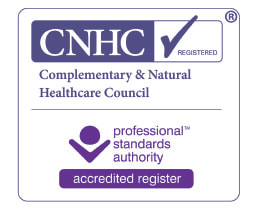Learning how to relax is a life skillWe all live busy lives, chaotic homes, and quite often it’s rush rush rush…. And when we are in a state of chaos and action all of the time, all of our energy goes to our muscles, and not to our brain, which causes exhaustion, anxiety. Because we are in action mode energy can’t be diverted to our brain, so we over think things (as our mind tries to process things). If only we could just r-e-l-a-x…… But we’ve forgotten how to relax, or perhaps it doesn’t even cross our minds. Therefore, our body, nervous system and brain can’t reset back down to a manageable and ‘normal’ coping level. If we could relax our muscles, give reassurance to our nervous system that everything is OK, we reduce the body's need for oxygen, our brain can function without flipping over, and we can reset ourselves to a healthier and calmer level. The Impact of Relaxation Relaxation yields a variety of benefits. Reduces
Believing in the Value of Relaxation I’ve had clients who have not been able to walk unaided into my therapy space because of stress and anxiety, who have not been able to sit or lie for reiki or hypnotherapy because they are so stressed. In these instances, I work with clients on breathing techniques and on teaching them how to relax, because when we are more relaxed and stable therapy is more effective and faster acting. Allowing Yourself to Relax Give yourself permission! Don’t feel guilty about taking some time to switch off and let go of all the tension in your body. Your body, mind, family, friends and work colleagues will ultimately thank you for it when they notice the positive changes in your and your behaviour. Learning to Relax Relaxing sounds easy right? We should all be able to do it at the drop of a hat yes? It’s the most natural thing in the world, right? Well actually no!! Something as natural as relaxation does not comes naturally to many! It’s actually a life skill, and like all skills we need to learn how to relax, we have to practice, be committed, tweak it a little and so on until we get comfortable with it and then it becomes natural to use. Think of it like learning to drive a car, except we are learning how to drive your body, muscles, mind and stress hormones. Practicing Relaxation via a Progress Relaxation Method You’ve got to practice. Then it becomes second nature. I recommend using a progressive relaxation technique, this is similar to guided meditations, however it is simpler, more focused and great for those who don’t visualise things, so perhaps are more kinaesthetic. Many progressive relaxation techniques involve focusing on a muscle group and tightening them, and then letting the muscles go, my approach is different. I believe if you are in a heightened state of anxiety/survival then your muscles are tenser then they should be anyway, so we simply bring our attention to our muscles and then give them permission (via a positive suggestion which is a hypnosis approach) to let go of that tension. So, in summary there are two basic parts to my progressive relaxation: 1) the recognition of the muscle group and 2) the permission for each muscle group to relax. Your Muscles Will Remember How It Feels to Relax Muscles have pervasive and lasting molecular “memory”, so the more they do something they will remember it, and then the effect will happen faster. Building New Neuro Pathways to Your Brain Practicing relaxation will also be remembered by our brains. Every time we undertake something we create a neuro pathway from our body to our brains, so the memory of new skills occurs in the brain too. The pattern of activity that helps you perform the same action over and over happens inside your brain as well as your muscles. Creating a Habit of Relaxation To benefits fully from progressive relaxation, and to create those memories in your muscles and your brain, you have to create a habit of the process, which means you have to set aside time 3-5 times a week for relaxing. The nice thing about establishing a routine of relaxation is that it only requires 20 -30 minutes, and it can be done almost anywhere, as long as you feel safe and comfortable. The Progressive Relaxation Process The process for muscle tension recognition begins by assuming a comfortable position of lying down, sitting, or leaning back. You should be in a quiet area, away from distractions, and obviously not driving or being the sole responsible person for young children etc Then you allow the tension in each muscle group in your body to melt away: Since there is tension in every muscle group, progression in a logical order is required to recognize and alleviate tension, we go from the feet upwards As you begin the relaxation process, your body should feel heavy and warm. The feeling of heaviness will turn into a sensation of weightlessness as your body begins to relax. Typically, a cool band forms across the forehead as relaxation occurs. The feelings of weightlessness, warmness and a cool band across the forehead are all natural responses in the relaxation process. You will feel a sense of well-being if relaxation is achieved. It takes a week or so to attain a full relaxation response, but you'll make progress daily as you acquire the skill of relaxing. Top Ten Tips to Progressive Muscle Relaxation If you’re new to relaxation techniques or PMR, consider these helpful tips:
Dealing with Setbacks It takes practice, commitment and giving yourself permission! There will be days where there are setbacks followed by days of great gains. Eventually, relaxation can be achieved in short period of time in any location. Many of clients are proof of this. After a week of practicing daily they find that it takes them less time to and effort to get into a relaxed state, so it becomes easier and more natural. They all report that they sleep better and have more patience and tolerance for the ups and downs of everyday life. If You Need Help If you need support in learning and practicing progressive relaxation then let me know, I'm always happy to share resources with clients. Comments are closed.
|
Categories
All
|
Reiki | Hypnotherapy | Massage | Book Appointment | Blog | FAQS | Events |
About Me | Find Me | Contact Me
Terms of Business | Privacy Policy
Providing Hypnotherapy, NLP, EFT, Reiki Healing, Spiritual Readings, Massage & Holistic Therapy Treatments and Workshops in Hampshire: Basingstoke, Alresford, Alton, Winchester and the surrounding areas.
About Me | Find Me | Contact Me
Terms of Business | Privacy Policy
Providing Hypnotherapy, NLP, EFT, Reiki Healing, Spiritual Readings, Massage & Holistic Therapy Treatments and Workshops in Hampshire: Basingstoke, Alresford, Alton, Winchester and the surrounding areas.









